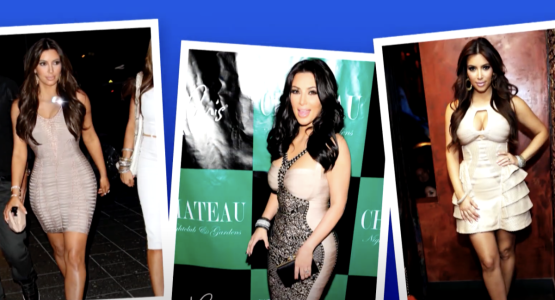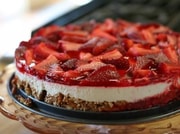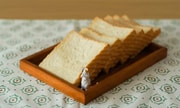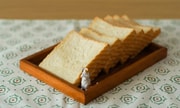How beauty standards have changed over the last 100 years—and why your era’s look might be back in style
By
Veronica E.
- Replies 0
If you’ve ever looked through old family photos or caught a glimpse of a classic film, you’ve likely noticed how ideas of beauty have changed over time.
One decade it’s all about curves, the next it’s about being slender and straight.
For more than a century, the so-called “ideal” female body has been shaped by everything from Hollywood icons to health trends, war, fashion, and now even medication.
At The GrayVine, we’re taking a walk through the decades to see how these beauty standards evolved—because no matter your shape or size, every era had its moment.
And chances are, so did you.
So grab a cup of coffee and come along.
You might just spot your own era’s beauty ideal—or realize you’ve always been timeless!

1910s: The original hourglass
The early 1900s ushered in the age of the Gibson Girl—a tall, elegant woman with a narrow waist, full bust, and high hair.
This look was largely created by illustrator Charles Dana Gibson, and it captured the imagination of the time.
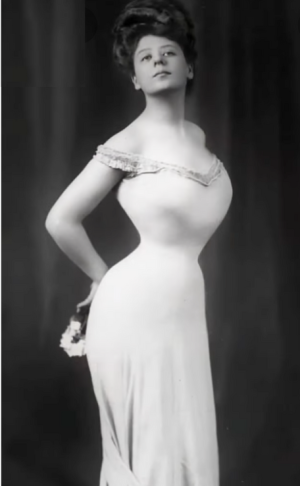
Women often wore corsets to cinch their waists, sometimes to unhealthy extremes. Camille Clifford, a popular model of the era, had an 18-inch waist.
The hourglass silhouette was queen.
1920s: Slim and rebellious
When the Roaring Twenties hit, women ditched the corsets and embraced a more androgynous figure.
The “flapper” style favored slim hips, small busts, and straight lines.
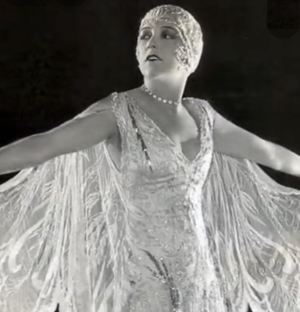
Hemlines rose, hair was bobbed, and freedom of movement (especially for dancing) became part of the ideal.
Margaret Gorman, the first Miss America, was petite and youthful—exactly what the era celebrated.
Also read: Beauty scandal alert: Could your botox be fake?
1930s: Curves return to the spotlight
The ‘30s marked the return of softness and glamour.
Hollywood stars like Jean Harlow and Dolores del Rio embodied a curvier figure again—still slender, but more feminine.
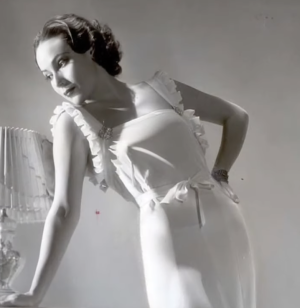
Lingerie evolved, the bra gained cup sizes, and bare shoulders made frequent appearances in fashion.
The ideal shifted once more, favoring a delicate but noticeable shape.
1940s: Strong, practical, and patriotic
With World War II reshaping the world, beauty ideals reflected the times.
Women went to work in factories and took on roles previously held by men.
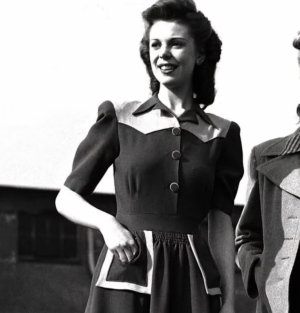
The body type of the time was stronger, athletic, and capable.
Think Rosie the Riveter or Katharine Hepburn’s broad-shouldered silhouette.
Clothing was functional, and beauty had a sense of grit and pride!
Also read: Revolutionary update at your favorite beauty retailer will transform your shopping experience forever–Find out how!
1950s: Curves dominate again
Post-war prosperity brought a return to softness.
Marilyn Monroe, Elizabeth Taylor, and Sophia Loren embodied the ideal figure—voluptuous, hourglass-shaped, and unmistakably feminine.
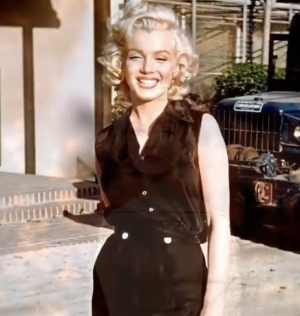
Believe it or not, some women even took weight-gain supplements to achieve fuller curves.
Beauty ads promoted roundness as desirable and glamorous.
1960s: The rise of Twiggy
In stark contrast to the '50s, the ‘60s welcomed ultra-thin models like Twiggy.
This was the age of “Swinging London,” mini skirts, and a childlike waif look.
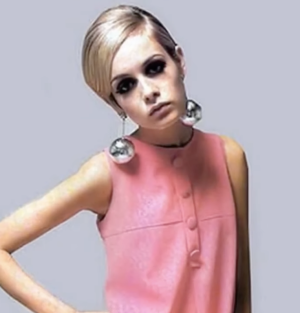
The ideal was lean, flat-chested, and youthful.
Weight-loss diets went mainstream, and beauty was equated with being small, stylish, and fashion-forward.
1970s: Natural and active
By the ‘70s, the ideal blended thinness with a more natural, athletic edge.
The focus was on being toned and healthy-looking, thanks to icons like Farrah Fawcett and Jane Fonda.
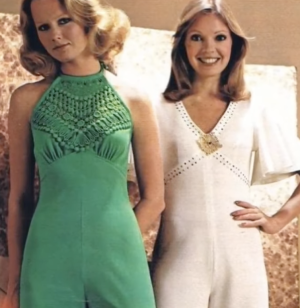
Fitness entered the mainstream—yoga, aerobics, and dance were in.
The body ideal was tall, tan, and in motion.
1980s: Fit and fabulous
Fitness became a lifestyle in the ‘80s.
Supermodels like Cindy Crawford and Elle MacPherson brought athleticism to the forefront, and Jane Fonda’s workout videos flew off the shelves.
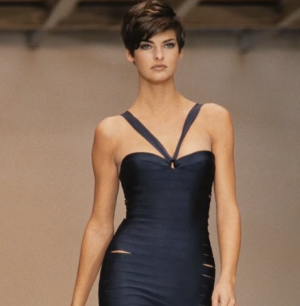
Toned abs, sculpted legs, and lean muscles were in.
It was about looking strong and glamorous at the same time—with a heavy dose of hairspray!
Also read: Microshading nightmare: How one woman’s quest for perfect brows almost became a "beauty crime"
1990s: The waif look returns
The ‘90s flipped the script again.

The “heroin chic” aesthetic, popularized by Kate Moss, celebrated extreme thinness, angular lines, and a moody, undone look.
It was edgy, but also concerning—many critics called out the rise in eating disorders during this era, as “thin” became more than just fashionable—it became an expectation.
2000s: Abs and low-rise jeans
With the new millennium came a hyper-focus on abs.
Pop icons like Britney Spears and Christina Aguilera made midriff-baring outfits the norm.

The ideal woman was slim, fit, and styled to perfection.
Low-rise jeans and crop tops left little to the imagination, and fitness culture placed even more pressure on women to tone up.
2010s: Curves make a high-profile comeback
Social media redefined beauty once again.
Kim Kardashian, Beyoncé, and Jennifer Lopez led the way with curvy, hourglass shapes and confidence to match.
Cosmetic procedures like the Brazilian Butt Lift gained popularity, while the body positivity movement also gained traction.
Plus-size models entered the mainstream—but so did filters, edits, and unrealistic expectations.
2020s: Ultra-slim meets self-optimization
Today’s trends are a mix of contradictions.
While body positivity is widely embraced, a new wave of ultra-slim ideals—often aided by injectable weight-loss drugs like Ozempic and Mounjaro—has made headlines.

Celebrities praise health and self-care, but curated online images still set high (and sometimes unachievable) standards.
It’s a complicated time for beauty!
Also read: Are people really shaving off their eyelashes? Here's what experts say about the latest trend
So what’s the takeaway?
Beauty standards have always shifted—sometimes drastically, and often with mixed messages.
But the women who have left the biggest mark didn’t just follow trends.
They embraced what made them them.
Whether you were curvy in the ‘50s, athletic in the ‘80s, or proudly yourself in any decade, there’s no one standard of beauty.
As we age, we see through the fads.
We know the value of confidence, health, and being kind to our bodies.
Real beauty isn’t about fitting into a mold—it’s about living your life fully and showing up as your best self, whatever that may look like.
Read next: 101 and fabulous! Meet the glamorous grandma taking over the internet

Which beauty era do you remember most? Did you feel the pressure to keep up—or did you forge your own path? What would you tell younger women who are still chasing the “ideal”? Share your stories in the comments—we’d love to hear your reflections!
One decade it’s all about curves, the next it’s about being slender and straight.
For more than a century, the so-called “ideal” female body has been shaped by everything from Hollywood icons to health trends, war, fashion, and now even medication.
At The GrayVine, we’re taking a walk through the decades to see how these beauty standards evolved—because no matter your shape or size, every era had its moment.
And chances are, so did you.
So grab a cup of coffee and come along.
You might just spot your own era’s beauty ideal—or realize you’ve always been timeless!

Beauty ideals have shifted dramatically over the decades—from hourglass figures to waif-like silhouettes and back again—reminding us that the true standard of beauty is ever-changing and deeply cultural. Image Source: YouTube / Worldostats.
1910s: The original hourglass
The early 1900s ushered in the age of the Gibson Girl—a tall, elegant woman with a narrow waist, full bust, and high hair.
This look was largely created by illustrator Charles Dana Gibson, and it captured the imagination of the time.

The 1910s embraced the Gibson Girl look—an elegant, hourglass figure with a tightly cinched waist, often achieved through restrictive corsets. Image Source: YouTube / @Mr.LionRing.
Women often wore corsets to cinch their waists, sometimes to unhealthy extremes. Camille Clifford, a popular model of the era, had an 18-inch waist.
The hourglass silhouette was queen.
1920s: Slim and rebellious
When the Roaring Twenties hit, women ditched the corsets and embraced a more androgynous figure.
The “flapper” style favored slim hips, small busts, and straight lines.

The 1920s flapper style favored a slim, boyish silhouette—short hair, dropped waistlines, and a carefree attitude that reflected the spirit of the Jazz Age. Image Source: YouTube / @Mr.LionRing.
Hemlines rose, hair was bobbed, and freedom of movement (especially for dancing) became part of the ideal.
Margaret Gorman, the first Miss America, was petite and youthful—exactly what the era celebrated.
Also read: Beauty scandal alert: Could your botox be fake?
1930s: Curves return to the spotlight
The ‘30s marked the return of softness and glamour.
Hollywood stars like Jean Harlow and Dolores del Rio embodied a curvier figure again—still slender, but more feminine.

In the 1930s, soft curves and feminine glamour returned, with Hollywood stars like Jean Harlow setting the tone for a more romantic, hourglass look. Image Source: YouTube / @Mr.LionRing.
Lingerie evolved, the bra gained cup sizes, and bare shoulders made frequent appearances in fashion.
The ideal shifted once more, favoring a delicate but noticeable shape.
1940s: Strong, practical, and patriotic
With World War II reshaping the world, beauty ideals reflected the times.
Women went to work in factories and took on roles previously held by men.

The 1940s celebrated strength and resilience—broad shoulders, practical fashion, and a more athletic build reflected women’s vital roles during wartime. Image Source: YouTube / @Mr.LionRing.
The body type of the time was stronger, athletic, and capable.
Think Rosie the Riveter or Katharine Hepburn’s broad-shouldered silhouette.
Clothing was functional, and beauty had a sense of grit and pride!
Also read: Revolutionary update at your favorite beauty retailer will transform your shopping experience forever–Find out how!
1950s: Curves dominate again
Post-war prosperity brought a return to softness.
Marilyn Monroe, Elizabeth Taylor, and Sophia Loren embodied the ideal figure—voluptuous, hourglass-shaped, and unmistakably feminine.

Marilyn Monroe embodied the 1950s ideal—voluptuous curves, a tiny waist, and timeless glamour that defined an era of classic Hollywood beauty. Image Source: YouTube / @Mr.LionRing.
Believe it or not, some women even took weight-gain supplements to achieve fuller curves.
Beauty ads promoted roundness as desirable and glamorous.
1960s: The rise of Twiggy
In stark contrast to the '50s, the ‘60s welcomed ultra-thin models like Twiggy.
This was the age of “Swinging London,” mini skirts, and a childlike waif look.

Twiggy became the face of 1960s fashion with her ultra-thin frame, pixie haircut, and doe-eyed look—ushering in the era of the youthful, waif-like ideal. Image Source: YouTube / @Mr.LionRing.
The ideal was lean, flat-chested, and youthful.
Weight-loss diets went mainstream, and beauty was equated with being small, stylish, and fashion-forward.
1970s: Natural and active
By the ‘70s, the ideal blended thinness with a more natural, athletic edge.
The focus was on being toned and healthy-looking, thanks to icons like Farrah Fawcett and Jane Fonda.

The 1970s embraced a natural, athletic look—toned bodies, sun-kissed skin, and an active lifestyle defined the beauty ideal of the disco and fitness era. Image Source: YouTube / @Mr.LionRing.
Fitness entered the mainstream—yoga, aerobics, and dance were in.
The body ideal was tall, tan, and in motion.
1980s: Fit and fabulous
Fitness became a lifestyle in the ‘80s.
Supermodels like Cindy Crawford and Elle MacPherson brought athleticism to the forefront, and Jane Fonda’s workout videos flew off the shelves.

Supermodel Linda Evangelista captured the 1980s ideal—tall, sculpted, and fiercely glamorous—during a decade that celebrated high fashion and high-powered beauty. Image Source: YouTube / @Mr.LionRing.
Toned abs, sculpted legs, and lean muscles were in.
It was about looking strong and glamorous at the same time—with a heavy dose of hairspray!
Also read: Microshading nightmare: How one woman’s quest for perfect brows almost became a "beauty crime"
1990s: The waif look returns
The ‘90s flipped the script again.

Kate Moss defined the 1990s “heroin chic” aesthetic with her waif-like frame, sharp features, and minimalist style—marking a controversial shift in beauty standards. Image Source: YouTube / @Mr.LionRing.
The “heroin chic” aesthetic, popularized by Kate Moss, celebrated extreme thinness, angular lines, and a moody, undone look.
It was edgy, but also concerning—many critics called out the rise in eating disorders during this era, as “thin” became more than just fashionable—it became an expectation.
2000s: Abs and low-rise jeans
With the new millennium came a hyper-focus on abs.
Pop icons like Britney Spears and Christina Aguilera made midriff-baring outfits the norm.

Britney Spears set the tone for 2000s beauty with her toned abs, low-rise jeans, and pop princess appeal—embodying the era’s obsession with youthful, fit bodies. Image Source: YouTube / @Mr.LionRing.
The ideal woman was slim, fit, and styled to perfection.
Low-rise jeans and crop tops left little to the imagination, and fitness culture placed even more pressure on women to tone up.
2010s: Curves make a high-profile comeback
Social media redefined beauty once again.
Kim Kardashian, Beyoncé, and Jennifer Lopez led the way with curvy, hourglass shapes and confidence to match.
Cosmetic procedures like the Brazilian Butt Lift gained popularity, while the body positivity movement also gained traction.
Plus-size models entered the mainstream—but so did filters, edits, and unrealistic expectations.
2020s: Ultra-slim meets self-optimization
Today’s trends are a mix of contradictions.
While body positivity is widely embraced, a new wave of ultra-slim ideals—often aided by injectable weight-loss drugs like Ozempic and Mounjaro—has made headlines.

The 2020s reflect a mix of extremes—ultra-slim figures often influenced by weight-loss drugs, alongside growing body positivity and a push for authenticity in a digitally curated world. Image Source: YouTube /Laura Jane Atelier.
Celebrities praise health and self-care, but curated online images still set high (and sometimes unachievable) standards.
It’s a complicated time for beauty!
Also read: Are people really shaving off their eyelashes? Here's what experts say about the latest trend
So what’s the takeaway?
Beauty standards have always shifted—sometimes drastically, and often with mixed messages.
But the women who have left the biggest mark didn’t just follow trends.
They embraced what made them them.
Whether you were curvy in the ‘50s, athletic in the ‘80s, or proudly yourself in any decade, there’s no one standard of beauty.
As we age, we see through the fads.
We know the value of confidence, health, and being kind to our bodies.
Real beauty isn’t about fitting into a mold—it’s about living your life fully and showing up as your best self, whatever that may look like.
Read next: 101 and fabulous! Meet the glamorous grandma taking over the internet
Key Takeaways
- Over the last century, beauty ideals have shifted from curvy to thin, natural to sculpted—often reflecting cultural, political, and technological changes.
- The 2010s emphasized curvy, hourglass bodies, while also spotlighting body positivity and increased representation of plus-size models.
- In the 2020s, injectable weight-loss medications are driving a return to ultra-slim bodies—raising concerns about health, image, and access.
- Experts say today’s beauty standards are more fractured than ever, promoting authenticity and wellness on one hand while still pushing narrow ideals through digital media and celebrity influence.
Which beauty era do you remember most? Did you feel the pressure to keep up—or did you forge your own path? What would you tell younger women who are still chasing the “ideal”? Share your stories in the comments—we’d love to hear your reflections!

